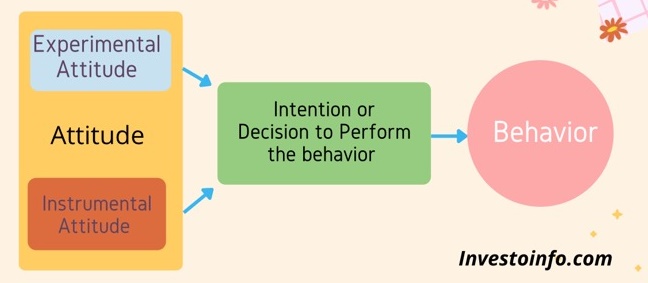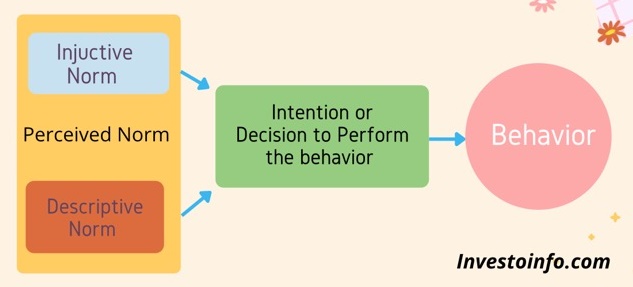What is mars model of individual behavior?
MARS model of individual behavior is a model that seeks to elaborate individual behavior as a result of internal and external factors or influences combined together. The name itself is an acronym for individual Motivation, Abilities, Role Perception and Situational Factors (MARS).
Table of Content
These are marked as the four major factors in determining individual behavior and results. The model can be implemented in a variety of situations but is usually applied in Management, Industrial Psychology, or Organizational Behavior studies.
This model represents that these four factors have a mixed effect on individual performance. If any factor weakens, performance will decrease. MARS model of individual behavior says, for example, passionate salespeople who understand their duties and have enough resources will not perform their jobs well if they lack sufficient knowledge and sales skill.
Therefore, the kitchen/household equipment repair store and other enterprises that excel in customer service pay attention to all four factors in the MARS model.

Meaning and Importance of the Model
MARS Model seeks to explain individual behavior as a result of internal and external factors or influences acting together. The acronym MARS stands for motivation, ability, role perceptions and situational factors.
All the above four factors are critical and influence the individual behavior and performance, if any one of them is low in a given situation the employee will perform poorly. These are seen as the four major factors in determining individual behavior and results.
Motivation
Motivation represents the forces within a person that affects his or her direction, intensity and persistence of voluntary behavior. Direction refers to the path along which people engage their effort. People have choices about where they put their effort; they have a sense of what they are trying to achieve and at what level of quality, quantity, and so forth. In other words, motivation is goal–directed, not random.
People are motivated to arrive at work on time, finish a project a few hours early, or aim for many other targets. The second element of motivation, called intensity, is the amount of effort allocated to the goal. Intensity is all about how much people push themselves to complete a task.
For example, two employees might be motivated to finish their project a few hours early (direction), but only one of them puts forth enough effort (intensity) to achieve this goal. Finally, motivation involves varying levels of persistence that is, continuing the effort for a certain amount of time.
Employees sustain their effort until they reach their goal or give up beforehand. Remember that motivation exists within individuals; it is not their actual behavior. Thus, direction, intensity, and persistence are cognitive (thoughts) and emotional conditions that directly cause us to move.
Ability
Abilities also make a difference in behavior and task performance. Ability includes both the natural aptitudes and the learned capabilities required to successfully complete a task. Aptitudes are the natural talents that help employees learn specific tasks more quickly and perform them better. There are many physical and mental aptitudes, and our ability to acquire skills is affected by these aptitudes.
For example, finger dexterity is an aptitude by which individuals learn more quickly and potentially achieve higher performance at picking up and handling small objects with their fingers. Employees with high finger dexterity are not necessarily better than others at first; rather, their learning tends to be faster and performance potential tends to be higher.
Learned capabilities are the skills and knowledge that you currently possess. These capabilities include the physical and mental skills and knowledge you have acquired. Learned capabilities tend to wane over time when not in use. Aptitudes and learned capabilities are closely related to competencies, which has become a frequently used term in business.
Competencies are characteristics of a person that result in superior performance. Many experts describe these characteristics as personal traits (i. e., knowledge, skills, aptitudes, personality, self–concept, values). Others suggest that competencies represent actions produced by a person’s traits, such as serving customers, coping with heavy workloads, and providing creative ideas.
With either definition, the challenge is to match a person’s competencies with the job’s task requirements. A good person–job match not only produces higher performance; it also tends to increase the employee’s well–being.
Role Perceptions
Motivation and ability are important influences on individual behavior and performance, but employees also require accurate role perceptions to perform their jobs well. Role perceptions are the extent to which people understand the job duties (roles) assigned to them or expected of them.
These perceptions are critical because they guide the employee’s direction of effort and improve coordination with co–workers, suppliers, and other stakeholders. Unfortunately, many employees do not have clear role perceptions. According to one large–scale survey, most employees understand their organization’s business goals, but only 39 percent know what to do in their own jobs to achieve those goals.
The role perceptions concept has three components. First, employees have accurate role perceptions when they understand the specific tasks assigned to them, that is, when they know the specific duties or consequences for which they are accountable.
This may seem obvious, but employees have been (unjustly) fired for failing to perform tasks that they didn’t even know were part of their job duties.Second, people have accurate role perceptions when they understand the priority of their various tasks and performance expectations.
This includes the quantity versus quality dilemma, such as how many customers to serve in an hour (quantity) versus how well the employee should serve each customer (quality). It also refers to properly allocating time and resources to various tasks, such as how much time a manager should spend coaching employees in a typical week.
The third component of role perceptions is understanding the preferred behaviors or procedures for accomplishing the assigned tasks. This refers to situations in which more than one method could be followed to perform the work. Employees with clear role perceptions know which of these methods is preferred by the organization.
Situational Factors
Employees’ behavior and performance also depend on how much the situation supports or interferes with their task goals. Situational factors include conditions beyond the employee’s immediate control that constrain or facilitate behavior and performance.
Some situational characteristics– such as consumer preferences and economic conditions–originate from the external environment and, consequently, are beyond the employee’s and organization’s control. However, other situational factors– such as time, people, budget, and physical work facilities–are controlled by people within the organization.
Therefore, corporate leaders need to carefully arrange these conditions so that employees can achieve their performance potential. The four elements of the MARS model–motivation, ability, role perceptions, and situational factors–affect all voluntary workplace behaviors and their performance outcomes. These elements are themselves influenced by other individual differences.
Components of MARS Model
The four components of the MARS model, which are, motivation, ability, role perceptions, and situational factors, affect all voluntary workplace behaviors and their performance outcomes. Let us understand each component in detail.
Motivation
Motivation can be described as internal forces that impact the direction, intensity, and endurance of a person’s voluntary choice of behavior. It consists of :–
Direction
focused by goals.
Intensity
bulk of effort allocated.
Persistence
amount of time taken for the effort to be exerted.
For example – A team leader encourages team members to work efficiently.
Ability
Ability is the natural tendency and learned capabilities needed to complete a task successfully. It has four different parts namely ?
Aptitudes
natural talent that helps people learn more efficiently and perform effectively.
Learned capabilities
accomplished skills and knowledge.
Competencies
abilities, individual values, personality traits and other features of people that result in superior performance.
Person–job fit
there are three ways to match people with jobs.
- selecting qualified people
- developing employee abilities through training
- redesigning job to fit person’s existing abilities
Example of Ability is – Rohan completes a task in 4 days while the time allotted was 6 days. He has the ability to complete it before the required time frame.
Role Perceptions
They are the beliefs about what behavior is necessary to achieve the desired results, and have a check that everyone is clear regarding their part. It is of four types :–
- Understanding the tasks to be performed.
- Understanding associated importance of tasks allotted.
- Understanding preferred behaviors to complete respective tasks.
- Clarifying role perceptions.
For example – Every member in a group is clear regarding the part allotted to them. For instance, the programmer writes the code and the tester checks it.
Situational Factors
They are the environmental conditions like given time bound, team members, budget, and work facilities that limits or facilitates behavior. Factors that are beyond the individual’s control in the short run.
Integrated individual behavior model helps in taking a decision in order to perform a task efficiently. It analyzes a person’s intention to act by studying three parameters – Attitudes, Perceived Norms, and Personal Agency.
Attitudes
Attitude invokes an individual’s overall promising or unpromising perception towards a behavior consisting of affective and cognitive dimensions. Attitude is again of two types –
- Experiential attitude
- Instrumental attitude
Experiential attitude (affective attitude) is the emotional reaction of an individual towards the idea of performing the behavior. Instrumental attitude (cognitive attitude) is determined by the beliefs regarding the results of behavior.

Perceived Norm
Perceived norm directs towards the social pressure one feels to achieve or abstain from a particular behavior.
Perceived norms are grouped into two categories –
- Injunctive norm
- Descriptive norm
injunctive norm (like the subjective norm) hints to normative beliefs regarding what others think one should do and encouragement to comply. Descriptive norm indicates to perceptions about what others in one’s social or personal connections are up to. They are meant to capture situations where there is strong social identity.

Personal Agency
Personal agency hints to individual’s ability to originate and direct actions for given purposes. It is divided into two parts –
- Self–efficacy
- Perceived control
Self–efficacy is an individual’s belief in his/her effectiveness in performing the tasks assigned as well presenting their actual skill. Perceived control is an individual’s perceived amount of control over behavioral conduct. It is resolved by control beliefs. Say for example, an individual’s perception of the degree to which various environmental factors make it easy or difficult to perform a behavior.

This is the final model design by combining all the parts seen earlier. This model concludes that behavior is based upon the decision one makes along with the current information about the situation, behavior, habit and environmental constraints. These are further dependent on attitude, norms and personal agency, and a result of other factors like our beliefs.
FAQ
What is Mars Model Of Individual Behavior?
MARS Model seeks to explain individual behavior as a result of internal and external factors or influences acting together. The acronym MARS stands for motivation, ability, role perceptions and situational factors.
Components of MARS Model ?
The four components of the MARS model, which are, motivation, ability, role perceptions, and situational factors, affect all voluntary workplace behaviors and their performance outcomes. Let us understand each component in detail.
